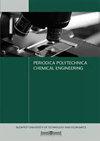基于人工智能的近红外和拉曼光谱法预测速释片体外溶出度
IF 1.8
4区 工程技术
Q3 ENGINEERING, CHEMICAL
引用次数: 0
摘要
本研究的目的是建立基于非破坏性光谱数据的人工神经网络(ANN)模型,以准确预测速释片的溶出度。制备了6种不同原料药(咖啡因)和崩解剂(马铃薯淀粉)浓度的片剂配方。在反射和透射模式下采集各片的近红外(NIR)和拉曼光谱,并进行主成分分析(PCA)。为了确定隐藏层的最优神经元数,对每个隐藏神经元数从1到10进行神经网络的训练。当神经元数量较少(1-3个)时,效果最好。在4种方法中,优化后的ANN模型对验证片的平均相似度(f2)均大于59,表明预测的溶出度曲线与测定的溶出度曲线相似。基于反射拉曼光谱的优化模型预测能力最好。结果表明,人工神经网络模型在片剂溶出度实时释放测试中的应用潜力巨大。本文章由计算机程序翻译,如有差异,请以英文原文为准。
Artificial Intelligence-based Prediction of In Vitro Dissolution Profile of Immediate Release Tablets with Near-infrared and Raman Spectroscopy
The objective of the present work was to develop an artificial neural network (ANN) model to accurately predict the dissolution profile of immediate release tablets based on non-destructive spectral data. Six different tablet formulations with varying API (caffeine) and disintegrant (potato starch) concentrations were prepared. The near-infrared (NIR) and Raman spectra of each tablet were collected in both reflection and transmission modes, then principal component analysis (PCA) was conducted. The training of the ANN was performed at each hidden neuron number from 1 to 10 in order to determine the optimal number of neurons in the hidden layer. The best results were obtained when a small number of neurons (1–3) was used. In the case of all four spectroscopic methods, the average similarity values (f2) of the optimized ANN models were above 59 for the validation tablets, indicating that the predicted dissolution profiles were similar to the measured dissolution curves. The optimized model based on reflection Raman spectra exhibited the best predictive ability. The results demonstrated the potential of ANN models in the implementation of the real-time release testing of tablet dissolution.
求助全文
通过发布文献求助,成功后即可免费获取论文全文。
去求助
来源期刊

Periodica Polytechnica Chemical Engineering
ENGINEERING, CHEMICAL-
CiteScore
3.10
自引率
7.70%
发文量
44
审稿时长
>12 weeks
期刊介绍:
The main scope of the journal is to publish original research articles in the wide field of chemical engineering including environmental and bioengineering.
 求助内容:
求助内容: 应助结果提醒方式:
应助结果提醒方式:


